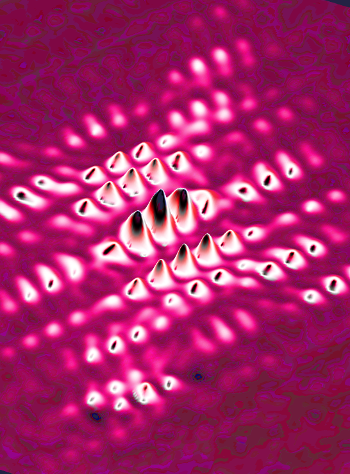Quantum sensor for scalable silicon
 Australian engineers have overcome another critical technical hurdle for building a silicon-based quantum computer.
Australian engineers have overcome another critical technical hurdle for building a silicon-based quantum computer.
A team at UNSW Sydney has demonstrated a compact sensor for accessing information stored in the electrons of individual atoms – a breakthrough on the path to scalable quantum computing in silicon.
Quantum bits (or qubits) made from electrons hosted on single atoms in semiconductors is a promising platform for large-scale quantum computers, thanks to their long-lasting stability.
Creating qubits by precisely positioning and encapsulating individual phosphorus atoms within a silicon chip is a unique Australian approach that UNSW’s Professor Michelle Simmons’ team has been leading globally.
But adding in all the connections and gates required for scale up of the phosphorus atom architecture was going to be a challenge – until now.
“To monitor even one qubit, you have to build multiple connections and gates around individual atoms, where there is not a lot of room,” says Professor Simmons.
“What’s more, you need high-quality qubits in close proximity so they can talk to each other – which is only achievable if you’ve got as little gate infrastructure around them as possible.”
Compared with other approaches for making a quantum computer, Simmons’ system already had a relatively low gate density. However, conventional measurement still required at least 4 gates per qubit: 1 to control it and 3 to read it.
By integrating the read-out sensor into one of the control gates the team at UNSW has been able to drop this to just two gates: 1 for control and 1 for reading.
“Not only is our system more compact, but by integrating a superconducting circuit attached to the gate we now have the sensitivity to determine the quantum state of the qubit by measuring whether an electron moves between two neighbouring atoms,” says lead author, PhD student Prasanna Pakkiam.
“And we’ve shown that we can do this real-time with just one measurement – single shot – without the need to repeat the experiment and average the outcomes.”
“This represents a major advance in how we read information embedded in our qubits,” concludes Simmons.
“The result confirms that single-gate reading of qubits is now reaching the sensitivity needed to perform the necessary quantum error correction for a scalable quantum computer.”








 Print
Print